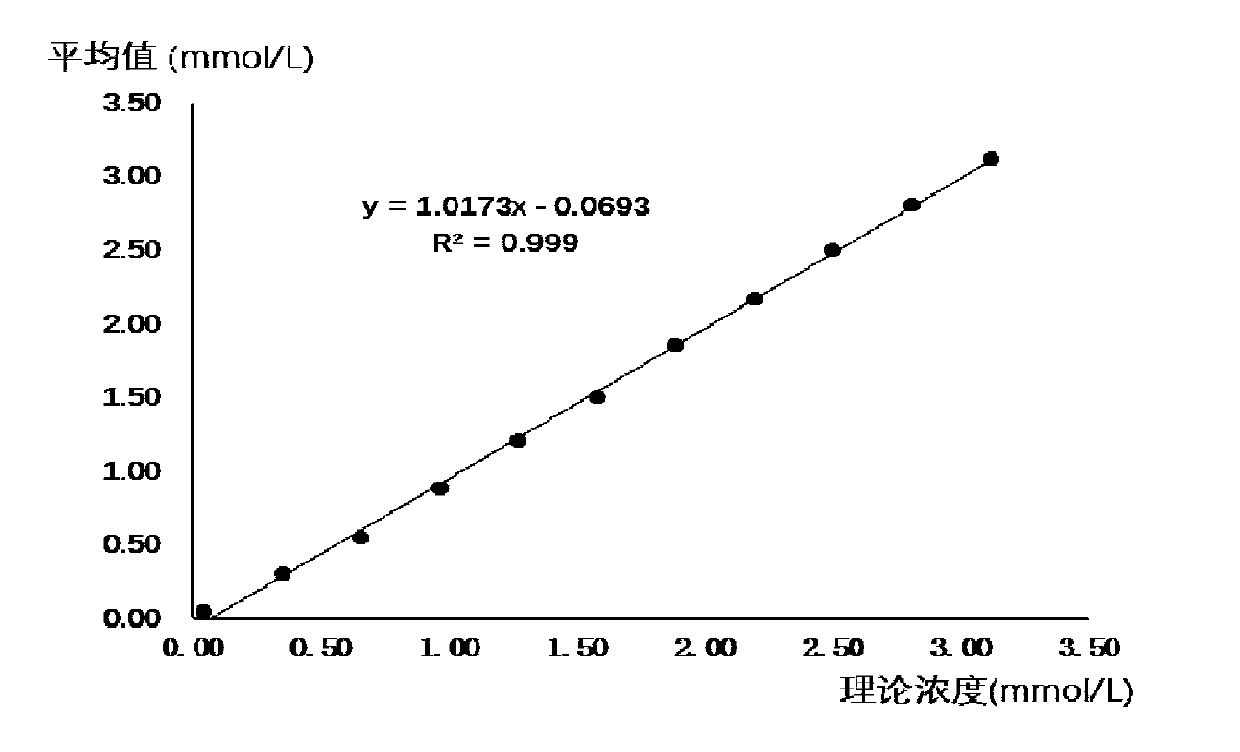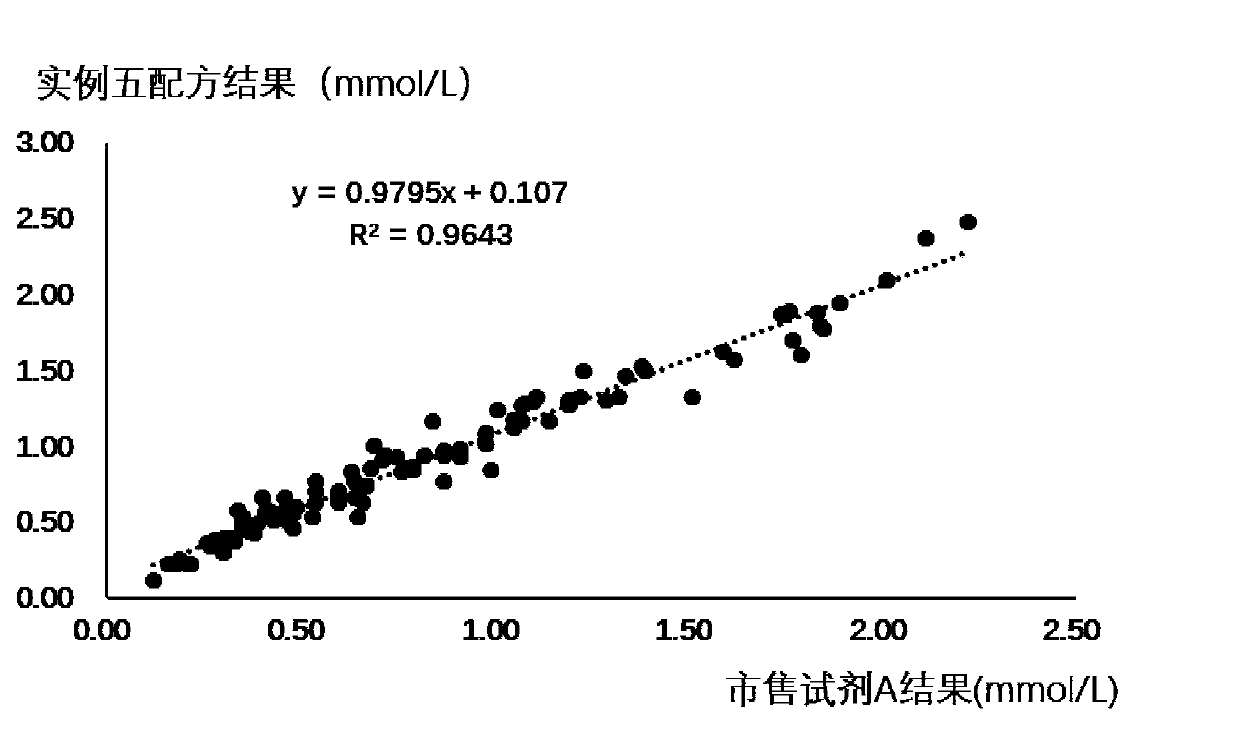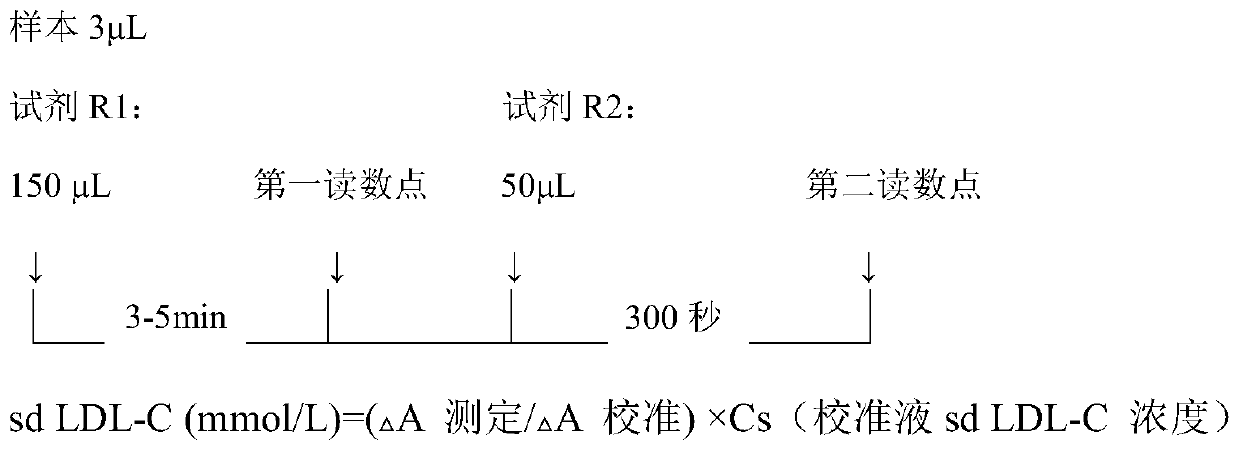Method and kit for quantitatively measuring small low-density lipoprotein cholesterol
A low-density lipoprotein, quantitative determination technology, applied in the direction of biochemical equipment and methods, microbial determination/inspection, etc., to achieve high reliability, high accuracy, and improve specificity and accuracy
- Summary
- Abstract
- Description
- Claims
- Application Information
AI Technical Summary
Problems solved by technology
Method used
Image
Examples
Embodiment 1
[0034] The method for quantitative determination of small dense low-density lipoprotein cholesterol first eliminates other lipoprotein cholesterol under the condition of preferentially protecting LDL-C, and then adds surfactant to selectively quantitatively measure sd LDL-C. For specific testing procedures, see image 3 shown.
[0035] In this method, a kit is required, and the kit used includes two independent liquid reagents, reagent R1 and reagent R2, and the volume ratio of reagent R1 and reagent R2 is 3:1.
[0036] The reagent R1 contains buffer, surfactant, protective agent, cholesterol esterase, cholesterol oxidase, catalase, chromogenic substrate, preservative and anti-interference components.
[0037] The reagent R2 contains a buffer, a surfactant, a peroxidase, a chromogen, and a preservative.
[0038] in,
[0039] The buffer is GOOD'S buffer.
[0040] The surfactant in the reagent R1 is a polyethylene glycol nonionic surfactant polyethylene glycol alkylphenyl et...
Embodiment 2
[0067] The only difference with Example 1 is:
[0068] The preservative in the reagent R1 is a kind of Proclin series, in this embodiment 1, it is Proclin 950 from Sigma Company; the surfactant is nonylphenol polyoxyethylene ether NP-7;
[0069] The surfactant in reagent R2 is polyacrylamide HEAL-06.
[0070] In reagent R1:
[0071] The concentration of the buffer in the solution is 200mmol / L, and the pH of the buffer is 6.0;
[0072] The concentration of surfactant in the solution is 2%;
[0073] The concentration of the protective agent in the solution is 0.05%;
[0074] The concentration of cholesterol esterase in the reagent is 5kU / L;
[0075] The concentration of cholesterol oxidase in the reagent is 1KU / L;
[0076] The concentration of catalase in the reagent is 1500KU / L;
[0077] The concentration of the chromogenic substrate TOOS in the solution is 6mmol / L;
[0078] The concentration of preservative Proclin950 in the solution is 0.1%;
[0079] The concentration...
Embodiment 3
[0089] The only difference with Example 1 is:
[0090] The chromogenic substrate is DAOS.
[0091] The surfactant in reagent R2 is a mixture of alkylbenzene sulfonate HNL006 and polyacrylamide HEAL-06 at a mass ratio of 1:1.
[0092] more specific,
[0093] In reagent R1:
[0094] The concentration of the buffer in the solution is 10mmol / L, and the pH of the buffer is 8.0;
[0095] The concentration of surfactant in the solution is 0.3%;
[0096] The concentration of the protective agent in the solution is 0.1%;
[0097] The concentration of cholesterol esterase in the reagent is 4KU / L;
[0098] The concentration of cholesterol oxidase in the reagent is 0.6KU / L;
[0099] The concentration of catalase in the reagent is 1200KU / L;
[0100] The concentration of the chromogenic substrate in the solution is 2mmol / L;
[0101] The concentration of preservatives in the solution is 0.2%;
[0102] The concentration of the anti-interference component in the solution is 3kU / L.
...
PUM
 Login to View More
Login to View More Abstract
Description
Claims
Application Information
 Login to View More
Login to View More - R&D
- Intellectual Property
- Life Sciences
- Materials
- Tech Scout
- Unparalleled Data Quality
- Higher Quality Content
- 60% Fewer Hallucinations
Browse by: Latest US Patents, China's latest patents, Technical Efficacy Thesaurus, Application Domain, Technology Topic, Popular Technical Reports.
© 2025 PatSnap. All rights reserved.Legal|Privacy policy|Modern Slavery Act Transparency Statement|Sitemap|About US| Contact US: help@patsnap.com



